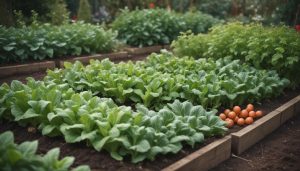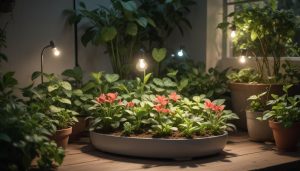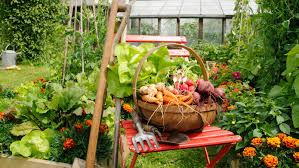How You Can Start a Home Garden That Thrives: A Complete Step-by-Step Guide
Daniel Fisher August 20, 2025
Discover how you can transform your outdoor (or even indoor) space into a flourishing home garden with this in-depth guide. Get practical strategies for choosing plants, preparing soil, nurturing growth, and managing common garden challenges for results you’ll love.
Why Start a Home Garden? Understanding the Benefits for You
Gardening has experienced a significant resurgence as more people explore sustainable living and healthier lifestyles. Starting a home garden lets individuals produce fresh produce, enjoy natural herbs, and create a peaceful retreat right at home. Beyond aesthetics, gardening can also contribute to personal well-being by reducing stress levels, boosting mood, and encouraging increased time spent outdoors in natural sunlight. For many, it’s a fulfilling hobby that delivers tangible rewards throughout the seasons.
One of the most compelling reasons to establish a home garden is the access it provides to nutritious, homegrown foods. Studies reveal that individuals who grow their own vegetables and fruits are more likely to consume higher quantities of these essential foods, leading to improved overall health (Source: https://www.cdc.gov/nutrition/index.html). Gardening also encourages physical activity, as tending to plants involves activities like digging, planting, watering, and harvesting—all of which contribute to daily movement goals.
In addition to promoting a healthy lifestyle, gardening offers valuable educational opportunities. Families with children can use gardening as a way to teach about plant biology, ecology, sustainability, and food systems. Even adults often find themselves learning new skills as they experiment with different plant varieties, soil mixes, and organic pest management methods. These lifelong learning experiences turn gardening into a journey of continuous discovery and personal growth.
Choosing the Right Type of Garden for Your Space and Needs
The first step in home gardening is selecting the type of garden that aligns best with your living situation and lifestyle goals. Traditional backyard gardens are ideal for properties with ample outdoor space, while raised beds offer greater control over soil conditions and can be especially useful in areas with poor native soil. Those in apartments or homes without yards can still participate in the gardening trend through container gardening or vertical setups on balconies and patios.
Each garden style presents distinct benefits. Raised beds, for example, support better drainage, root growth, and help deter weeds. Container gardens enable flexibility, allowing gardeners to move plants as sunlight patterns shift over the months. Rooftop or urban micro-gardens have surged in popularity, using innovative solutions to bring greenery into densely populated areas. When planning any home garden, always consider available light, climate, and maintenance needs.
For those passionate about sustainability, integrating native plants or pollinator-friendly species can boost biodiversity and support local ecosystems (Source: https://www.fs.fed.us/wildflowers/pollinators/gardening.shtml). Many gardeners conduct a site assessment to identify the best placement for sun-loving or shade-tolerant species, and this mapping process saves time and increases gardening success rates significantly.
Preparing Soil, Compost, and Key Foundations for Garden Success
Healthy soil is the foundation of a thriving home garden, and most gardening experts recommend starting with a soil test to understand nutrient profiles and pH balance. Amending soil with organic compost, manure, or additional nutrients can address deficiencies and create an environment where roots flourish. Simple composting methods, like using kitchen scraps and yard waste, help recycle organic material while delivering essential nutrients directly back to the garden beds.
Understanding local soil types plays a critical role in choosing proper amendments. Clay soils require aeration and organic matter for improved drainage, while sandy soils need compost to retain moisture. For raised beds or container gardens, pre-mixed potting blends often provide an optimal starting point. Ensuring proper drainage and aeration reduces risks of root rot or waterlogged plants, which are common beginner pitfalls (Source: https://hgic.clemson.edu/factsheet/soil-preparation-for-vegetable-gardens/).
Compost bins or tumblers are easy to set up and maintain, even in smaller spaces. Turning compost regularly accelerates decomposition, and finished compost not only fertilizes but can improve garden structure and water retention. By prioritizing healthy soil practices, gardeners set themselves up for abundant harvests and robust, disease-resistant plants. Exploring organic mulch options can further moderate soil temperature and suppress unwanted weeds organically.
Selecting the Best Plants: Easy Options and Seasonal Considerations
Home gardens thrive when planted with varieties suited to local weather and growing conditions. Beginners often have great results with lettuce, radishes, cherry tomatoes, and herbs such as basil or parsley, as these crops mature quickly and are forgiving for first-time gardeners. Perennial flowers and native shrubs can add year-round interest and support local pollinators, attracting beneficial insects to the garden space.
Understanding planting zones and frost dates is essential for timing your garden activities. Resourceful gardeners consult regional extension offices or local gardening clubs for tips on the most successful crops and planting schedules (Source: https://www.almanac.com/gardening/frostdates). When selecting seeds or starter plants, consider disease-resistant varieties or those bred for unique taste, appearance, or compact growth—especially valuable for container gardens.
Rotating crops each season helps prevent soil depletion and disrupts cycles of garden pests, sustaining a healthy garden ecosystem over the long term. Interplanting herbs like marigolds or chives with vegetables can further deter common garden pests. If space is limited, vertical planters or hanging baskets extend the growing area and bring greenery to unused walls or balconies, expanding garden possibilities in almost any setting.
Essential Maintenance: Watering, Fertilizing, and Natural Pest Control
Consistent care ensures a garden’s vitality throughout the year. Watering early in the morning helps reduce evaporation and directs moisture to plant roots when it’s needed most. Gardeners strive for deep, infrequent watering to promote deeper root growth, using soaker hoses or drip irrigation systems to improve efficiency and conserve water. Rain barrels and similar tools harness natural rainfall for sustainable garden hydration.
Fertilizers replenish necessary nutrients, but in home gardens, it’s wise to favor slow-release or organic options. Over-fertilizing can damage plant roots and leach into local waterways. Gardeners can explore using compost tea, fish emulsion, or worm castings as eco-friendly alternatives that gently promote growth. Local cooperative extensions offer excellent resources for choosing optimal fertilization strategies based on specific plant choices and soil test results.
Pest management in eco-friendly home gardens often prioritizes prevention over intervention. Companion planting, row covers, and hand-picking pests can prevent infestations without resorting to harsh chemicals. When issues arise, neem oil, insecticidal soaps, or natural predators like ladybugs address problems with minimal impact to the surrounding ecosystem (Source: https://www.epa.gov/safepestcontrol/controlling-pests-responsibly-your-home-and-garden). Monitoring for early signs of disease ensures swift action, preserving productivity and plant health.
Harvesting, Troubleshooting, and Learning as You Grow
Knowing when and how to harvest is a rewarding aspect of gardening. Harvesting vegetables and fruits at the right time maximizes both flavor and nutrition, and regular picking often encourages future yields. Simple guidelines, like checking for color, firmness, and aroma, aid gardeners in determining peak harvest moments. Careful handling prevents damage during picking and storage, extending the shelf life of homegrown produce.
All gardeners, regardless of experience, encounter challenges such as wilting plants, yellowing leaves, or slow growth. Diagnosing issues may involve revisiting foundational topics—like water habits, sun exposure, or possible infestations. Local extension services, gardening forums, and university agricultural programs are invaluable resources for advice, diagnosis, and new gardening ideas (Source: https://extension.umn.edu/planting-and-growing-guides/diagnose-plant-problems).
Beyond practical considerations, cultivating a home garden often prompts curiosity and ongoing exploration of new techniques and plant types. Joining gardening groups, attending workshops, or exploring webinars unlocks shared wisdom from communities of experienced growers. Through problem-solving, celebration of successes, and learning from the inevitable setbacks, gardening becomes not just a hobby, but an ongoing process of personal growth and discovery.
References
1. Centers for Disease Control and Prevention. (2023). Nutrition, Physical Activity, and Obesity. Retrieved from https://www.cdc.gov/nutrition/index.html
2. U.S. Forest Service. (2022). Gardening for Pollinators. Retrieved from https://www.fs.fed.us/wildflowers/pollinators/gardening.shtml
3. Clemson Cooperative Extension. (2022). Soil Preparation for Vegetable Gardens. Retrieved from https://hgic.clemson.edu/factsheet/soil-preparation-for-vegetable-gardens/
4. The Old Farmer’s Almanac. (2023). Planting Calendar: When to Plant Vegetables. Retrieved from https://www.almanac.com/gardening/frostdates
5. U.S. Environmental Protection Agency. (2023). Controlling Pests Responsibly in Your Home and Garden. Retrieved from https://www.epa.gov/safepestcontrol/controlling-pests-responsibly-your-home-and-garden
6. University of Minnesota Extension. (2023). Diagnose Plant Problems. Retrieved from https://extension.umn.edu/planting-and-growing-guides/diagnose-plant-problems






